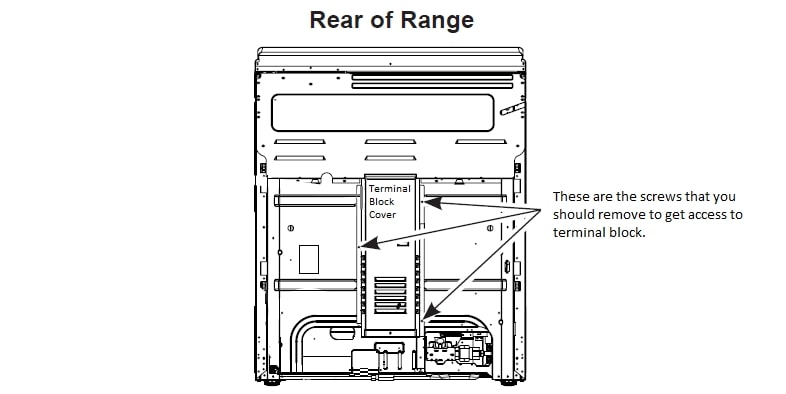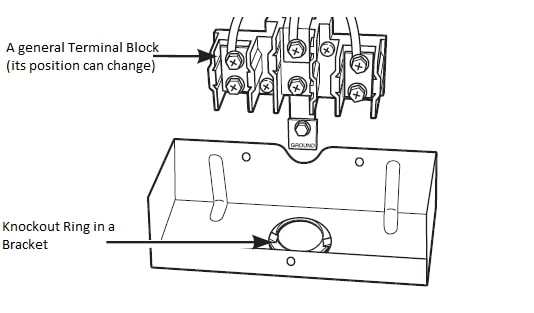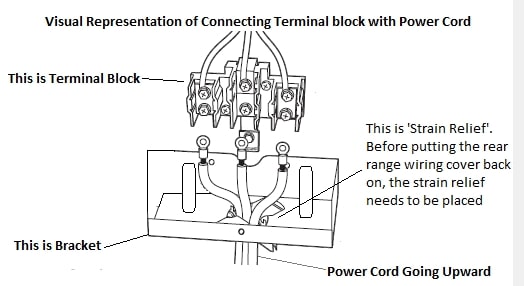
 Save Upto $850 ›
Save Upto $850 ›While operating a gas stove, you may have omitted the fact that the gas stove needs electricity. Yes, a gas stove still needs electricity, even if it doesn’t use nearly as much as an electric one. The power is used to run the gas igniter and whatever extras the appliance has, like a clock/timer and an oven light, rather than for heating.
Now that’s good you know the gas stove also needs electricity because in this article we are going to tell you and everything about the power cords that are being used in your gas stove, what type of it you should use and how you can connect it.
Stove Manufacturing Companies does not provide power cords. You have to buy them separately.
To buy them you can check the amperage that your gas stove requires.
Majority of the times a 110v plug can be best. But checking before buying is always a good approach.
Here, we have only described the general process of installing a power conduit and a power cord and has not described the difference between 3-prong or 4-prong cord
For detailed insights into the subject matter, we have answered almost all the questions related thereon
Almost all the famous brands including Samsung, Frigidaire, Kenmore, etc. do not provide a power cord for stoves when purchased, regardless, of of whether the stove is electric or gas.
You will need a 110v outlet behind the stove because the power cord is only 4 to 5 feet away. Only the gas igniters and the clock, timer, and display require power.
But why gas stoves don’t provide power cords on purchase?
Due to the uncertainty of which cord you would require, manufacturers do not include one. Moreover, contemporary homes feature outlet receptacles that can support ‘four-prong cords’, while older homes will typically only have ‘three prong outlets. You should also be aware that some ranges require professional hardwiring.
As long as it is still in safe operating condition and has experienced very little wear and tear, it is most definitely possible to use the chord from an old range. There shouldn’t be any tears, cracks, or exposed circuitry. Additionally, you should confirm that the cord and your breaker can withstand the amps generated by your new range.
However, many companies advise using a new power cord with a brand-new stove. We also think it is the best approach.

Installing a power cord by yourself is a simple task however it involves hooking up wires and even removing a copper strip, depending on the type and requirement of your gas stove.

Use a nut driver (1/4”) and remove the screws from the back of your gas range to remove the back cover.
Either the wire cover or a terminal block cover must be removed in order to access the terminal block.
Don’t throw these screws away.

Remove the knockout ring from the bracket behind the terminal block, but only for the power cord and 1″ conduit.
Using a pair of pliers, twist the knockout ring until it is free of the bracket to remove the knockout.

Place the strain relief in the hole only if installing a power cord. The power cord should be inserted through the strain relief and tightened. To simply connect the cord terminals to the terminal block, leave adequate slack. If tabs are present, the winged strain relief tendon will be relieved. For a better fit, these can be taken off.
Installing the power cord without a strain relief is dangerous. Before putting the rear range wiring cover back on, the strain relief needs to be placed.

Only when installing a 3/4″ conduit, get a squeeze connector that fits the conduit’s diameter and put it together in the hole. Squeeze the conduit into the connector, then tighten. Again, leave enough room for the wires to be connected to the terminal block with ease.
Without a squeeze connector, the conduit must not be installed. The rear terminal block cannot be reinstalled until the squeeze connector has been inserted.

This was only the general instructions to help you understand how things work and does not substitute the advice from professional or manufacture of your stove.
Therefore, we recommend you to not involve in so much hassle especially when you do not what you are doing
So, this was the whole process of installing the power cord on a gas stove. If it seems to be a little complicated then we have also shared a video below for the replacement of a gas stove power cord.
You have to determine by yourself or check from the manual / get the professional to determine whether your range requires three prong or four prong cord.
Then choose whether or not you want to install your cord and range yourself or whether you want to hire a professional electrician to do it for you.
The first thing is to check your stove’s manual to ascertain what type of power cord your stove requires. Moreover, the manual will also provide instructions how to install it or if you should install the power cord on your new stove by yourself or not.
Majorly the companies abstain their users to install the newly bought stove by themselves in order to avoid any damage to their brand new stove.
You’ll get the manual at the time of receiving your stove. If not, you can download the manual from internet.
If, for some reasons, you did not obtain the manual of your gas stove and do not know what type of power cord does your stove requires, then you can call the manufacturing company of your gas stove and by telling them the make and model of your stove you can acknowledge what type of power cord you need.
Even if you enjoy completing DIY projects, keep in mind that your power cable uses a lot of power and energy, so if you don’t know what you’re doing, the installation shouldn’t be taken lightly. If you can figure out what kind of cord you’ll need before your range needs to be installed, it will save you a lot of time and hassle.
If your stove requires hardwiring, you will probably need assistance from a professional in this regard.
To replace the gas stove power cord you can see the video below. The video has explained the best with necessary visuals which cannot be properly defined in words:
A stove is a powerhouse in terms of electricity use. Because of this, you can’t simply plug them into the typical 110-volt outlets used in the United States; instead, the majority of stoves need a specific 220-volt outlet.
We hope that we have covered almost all the aspects related to using a power cord on a gas stove. However, if you still think that we have omitted or that the information provided thereon is somewhat non-understandable or misleading then contact us for further guidance in this regard.